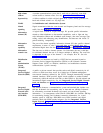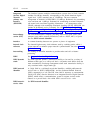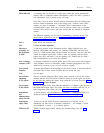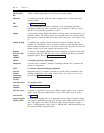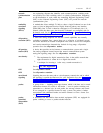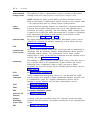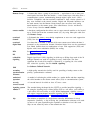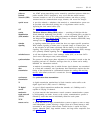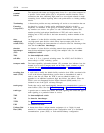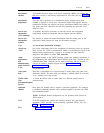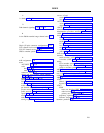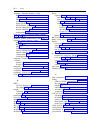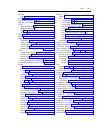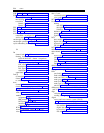
GLOSSARY GL-19
Software
Defined
Network (SDN)
special access
SS7
station
identification
(SID) number
stimulus
signaling
switched access
synchronization
synchronous
data
transmission
synchronous
transmission
T1
T1 digital
carrier
tandem tie-
trunk network
(TTTN)
TCM
tenant service
An AT&T private networking service created by specialized software within the
public network. SDN is designed to carry voice and data traffic between
customer locations as well as to off-network locations, and offers a pricing
structure based on communications usage, distance, and access-line charges.
A provision whereby a telephone, data terminal, or communications system can
be provided with connections directly into a long-distance carrier service,
bypassing the local central office (CO).
See signaling system number 7.
The direct distance dialing (DDD) address — consisting of 10 digits with the
North American numbering plan (NANP) — of the originating party provided in
the address-digits field of the calling-party-number information element (IE) in
the Integrated Services Digital Network primary rate interface (ISDN-PRI) setup
message. See also ISDN SID-ANI.
A signaling method that reports stimuli but does not request specific operations.
With stimulus signaling, a button press is reported simply as a button press, not
as the activation of the feature associated with the button, as with functional
signaling. The signaling in the Digital Communications Protocol (DCP) message
set is primarily stimulus signaling. See also functional signaling.
A call that originates from a local exchange carrier (LEC) to an inter-LATA
(local access and transport area) carrier network.
The process in which proper phase alignment to a transmitter is made so that the
beginning and end of a character, message, time slot, or frame can be readily
identified for information retrieval.
A method of transmitting data in which discrete signal elements are transmitted
at a fixed and continuous rate. Synchronous data transmission requires that the
timing of the transmission be synchronized between the sending and receiving
devices. Also called synchronous transmission. See also asynchronous data
transmission.
See synchronous data transmission.
A digital transmission standard that in North America carries traffic at the
digital signal level-l (DS1) rate of 1.544M bps.
A type of digital transmission medium that transmits at 1.544M-bps and is
capable of carrying 24 channels.
A private network that interconnects several customer communications systems
by dial-repeating tie trunks. Access to the various communications systems is
dictated by codes that must be individually dialed for each system.
See traveling class mark.
A service that allows a large communications system to appear to users as many
small independent systems, allowing a single system to be shared among a wide
assortment of user groups called tenants. Tenant Service is useful for major
airports, industrial parks, large medical centers, and large office complexes. See
also partitioning.



